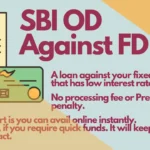Positive Pay System: What is PPS in banking? How does it impact your regular banking transactions? Is it mandatory for you to enrol in the scheme? Let’s explore the advantages of the newly implemented positive payment system at the bank.

Those are the few questions that a consumer thinks of.
Though banks have introduced the electronic payment system in all modes, be it cash withdrawal, fund transfers, and cheque clearing processes.
But, it has been widely seen that most consumers are still perplexed. That’s the major reason why there is a sudden spurt in cheque payment rejection by the banks.
It is also seen a number of times that consumers are dissatisfied because of the cheque bounce which of course involves paying penalties to the bank without any fault on your end.
When you have been penalized due to a cheque bounce, even after having sufficient balance, it’s excruciating. Though you can contest against the bank, the chances of getting back the refund are bleak as it’s an instruction given by the Reserve Bank. Which means you ought to follow the rules.
What is a Positive Pay System?
The Positive Pay System is a new and improved method of exchanging cheque payments among individuals or organizations. Banks introduced the payment system as per the guidelines of the Reserve Bank.
The main motive of PPS is protection against fraudulent transactions. It was, in fact, a necessity to make certain changes to the way we do cheque payment and receive. Mainly because of the rise of cheque manipulation and forgery.
Though a large chunk of consumers are yet to onboard under the new payment module, it looks like banks are handling the system quite well. From the consumer’s perspective, people are still confused and surprised when their payments are rejected.
Starting in January 2021, the Reserve Bank has implemented the Positive Pay System – an electronic authentication system designed to prevent large-scale cheque-related frauds that have occurred in the recent past.
That is why, you must know certain aspects of PPS if you make frequent cheque payments. Under the Positive Pay System, you have to choose a certain limit and advise the bank to set it against your bank account.
As per the State Bank of India, it’s been said that as of now, the registration of the Positive Pay System is not mandatory, but the bank is planning to make the Positive Pay System mandatory for Savings Bank Accounts and Current Accounts.
| Savings Bank Account | Current Account, Cash Credit and Overdraft Account |
| The mandatory limit is cheque value of ₹5 lakhs | The mandatory limit is a cheque value of ₹5 lakhs |
To use the facility, customers have to register their cheque-operated account for the Positive Pay System. This is a one-time registration process that can be completed at any of the branches by filling out an Annexure I application form.
Instead of visiting the bank, you can also register for Positive Pay System SBI on Retail Internet Banking (RINB), Corporate Internet Banking (CINB), Mobile Banking (YonoLite), and YONO (Mobile App) channels. During registration, consumers have to select an account level limit based on their risk perception.
This is the point where your bank account has a specific limit on the amount that can be paid to you or someone else. This means that you have arranged your bank account in a manner that makes it impossible for large-scale fraud to occur.
The other feature of the Positive Pay System is the sharing of cheque details with the bank. This enables banks to weed out the possible threats of fraudulent transactions at a large scale.
How Positive Pay System Work in India?
Positive Pay System is set in such a beautiful way that the chances of happening cheque-related fraud are greatly reduced. To understand it, you have to know how it works.
It’s a one-time registration that you need to do. Either online or by visiting the bank. You can get it done quite easily. So, broadly speaking, the Positive Pay System function in two ways.
- One is involved setting of transaction limit in your bank account. As per various banks, it is found that the recommended limit is ₹50000 and above. That means you can arrange your bank account as per your specific need and avoid fraudulent cheque-related transactions.
- On the other hand, under Positive Pay System, there is a sharing of cheque details between the cheque drawer and the concerned bank which further curtails the cheque manipulation and forgery. For instance, when you draw a cheque, you are going to share the details of the cheque with the bank before handing it out to the party. These details include- Cheque number, payee name, and amount to be paid.
Is Positive Pay System Mandatory?
That’s what most of the consumers are thinking of. Is PPS mandatory? In view of the present scenario where cheque-related frauds are happening rampantly, it would be wise to get yourself registered.
Though, banks are not making the PPS mandatory as of now. Though, some banks such as State Bank of India, HDFC, ICICI and others are claiming to make it mandatory sooner or later.
Conclusion and Final Thoughts
A positive Pay System is a good initiative taken by the Reserve Bank thereby implemented by all the Indian banks. Due to its effective features, consumers feel far safer in issuing high-value cheques without having any consequences to worry about.
What you have to do is to pick a limit of a certain amount, let your bank set it against your bank account and share your cheque details with your bank whenever you issue a cheque to someone.
This is how you secure your cheque payment through the innovative electronic payment system called Positive Pay System.







